The Pope House Museum and Community Challenge
One of the most overlooked historic houses in Raleigh is also one of the most important, the Dr. M.T. Pope House on S. Wilmington Street. Although modest in appearance, it’s a narrow two-story Victorian row house, a style with few surviving examples remaining in Raleigh.
This house is currently part of the 2011 Community Challenge put on by the National Trust for Historic Preservation. So before learning about the history of the man and house, please go to the National Trust web site and VOTE for this house in the challenge. Registration takes only a minute.
The winner of the contest is eligible for up to $25,000 is grant funds. The Pope House is deserving of this and needs your help.
An Extraordinary Man In Extraordinary Times
Dr. Pope’s life would have been extraordinary for anyone living at the turn of the century: a landowner, a medical doctor, a freemason (the Prince Hall Masonic Lodge is on a block adjacent to his house), and a Spanish-American war veteran. What made Dr. Pope even more unique was the fact he accomplished all of this being a person of color in the segregated South well before the Civil Rights movement of the 1960s.
A Part of History with Leonard Medical School
Leonard Medical School was a part of Shaw University and was the nation’s first 4-year medical school and the first school dedicated to training African-Americans in the South. Dr. Manassa Thomas Pope was part of the first graduating class in 1886.
Building a Life as a Doctor
When Dr. Pope first set up in Raleigh after getting his medical degree, he did so on Fayetteville Street. Shortly thereafter, he moved his practice to Raleigh’s African-American main street, Hargett St. In his later years when his health began to fail, he would see patients out of his home.
In deciding where to build a house, Dr. Pope chose the Third Ward area, which is around south Wilmington St. At the turn of the 20th century, it was a prestigious area for black professionals, but also had a few notable white residents as well. One of these white residents of the Third Ward was Josephus Daniels, who was Secretary of the Navy, Ambassador, and Editor of the N&O.
Pope chose the most prominent space he could, on the very edge of the division line between the white families that lived on Fayetteville St, and the black families that lived East of Wilmington St.
The 1903 Sanborn Insurance map above shows the block as being largely residential. All of the houses on that block are now gone.
Politically Active, and Challenging State Law
In addition to being a war veteran, a doctor, and community leader, Dr. Pope was also involved politically. This was at a time when blacks were not allowed to vote. He was active in the Republican party, and in 1902 was one of only seven men of color in Raleigh to vote. By doing so, he was directly challenging the state laws which prevented non-whites from voting.
A few years later he went significantly further, and ran for office:
Dr. Pope’s political activity reached a high point in the spring of 1919, when, in the midst of Jim Crow segregation and at a moment of extreme racial tension in the nation, he courageously ran for mayor of Raleigh. At that time the Raleigh city council consisted of only three members: mayor, commissioner of public safety, and commissioner of public works. Dr. Pope headed a non-partisan African American slate of candidates along with Calvin Lightner (whose son, Clarence Lightner, became the first black mayor of Raleigh in 1973) and J. Cheek in the April primary. […] Of those registered, 2,550 cast ballots, with Dr. Pope receiving 126. As Calvin Lightner later remembered “we knew we wouldn’t win, and if we did win the whites wouldn’t let us administer, but we did it to wake our people up politically.â€
What’s Left of the Residential Area Today
Today, it’s all gone except for the Pope House. By my estimation, it’s the only surviving single-family detached house in the core of the center city–the area between the Capitol Building and Auditorium, within a block of Fayetteville St.
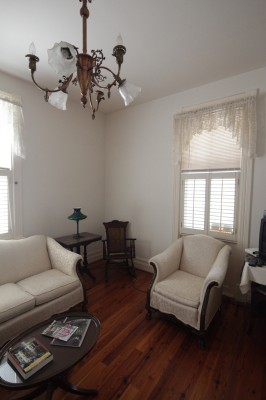
Pope house interior, showing original lighting fixture that was connected to both electricity and gas
The House and Museum
The house was in the same family until the last of the Pope sisters (Evelyn and Ruth, daughters of Dr. Pope) died eleven years ago. Although a few parts of the house have been renovated, most of the original furnishings are in place, with countless original fixtures relating to turn of the century living.
Particularly interesting is the original maid callbox in the photo above. Each room had a buzzer, which corresponded to a number on the box. Although I’ve seen door buzzers in several abandoned as well as restored Victorian houses, this is the first time I’ve seen the box they were connected to.
There are countless boxes and shelves of Dr. Pope’s medical equipment. Unfortunately this and the other treasures of the Pope House are not generally viewable by the public. When the foundation took control of the house around the turn of the last century, there were grand plans to create a learning and history center open to the public.
Unfortunately, the amount of funding necessary for such a venture didn’t materialize and the house faces an uncertain future. While it certainly is not in any danger of being demolished, it is an unrealized local and national treasure. Most Raleigh residents are unaware of the historical treasure in the heart of downtown.
Please Help Spread the Word
As of this writing, the Pope House is about halfway up in the national rankings. Please consider sharing the National Trust web site link via email, Twitter, Facebook, and all the rest.
The Pope House is one of the most historically significant and well-preserved structures in Raleigh. It deserves some home town help in this friendly contest.
More From WRAL
Further Reading
- The Pope House Museum Foundation
- An American Success Story: The Pope House of Raleigh, NC (National Park Service)
- Dr. Pope House (National Park Service)
More From Inside the Pope House

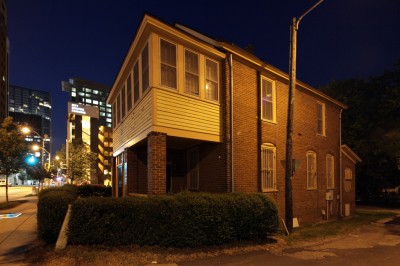
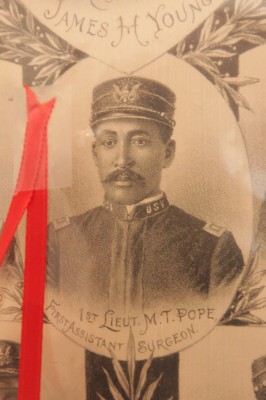
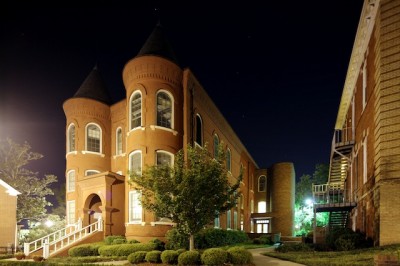
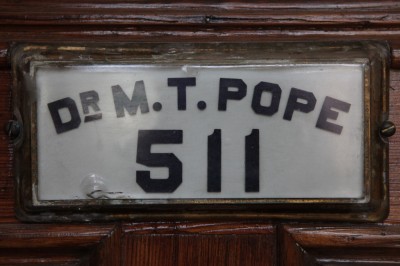
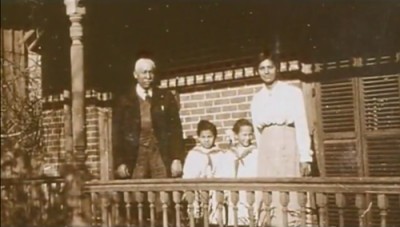



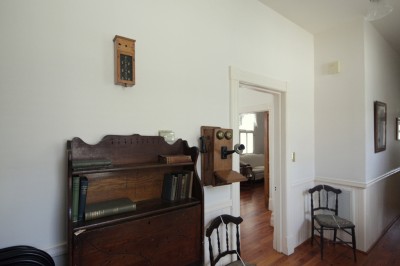
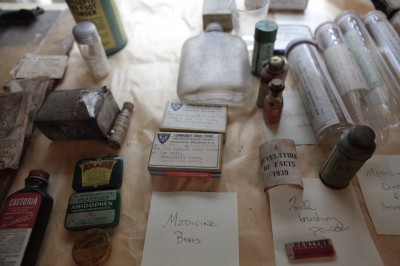
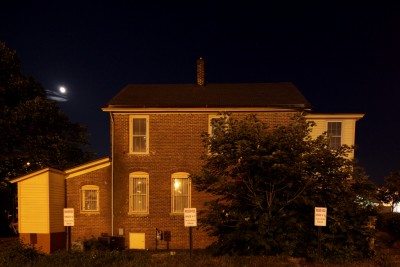
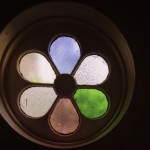
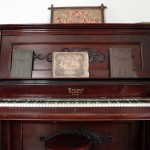
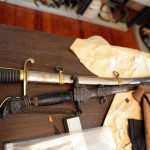
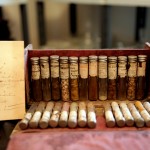
 Sign up for the Newsletter
Sign up for the Newsletter
06/15/2011
I can always count on Goodnightraleigh.com to provide me with knowledge about the area directly around me that I had no clue of. Thanks for this and all the other articles you do that wake us up to our disappearing past all around us.
06/15/2011
This is very interesting, I had no idea about the history of the house. Cast my vote!
06/26/2011
wow. very interesting! i’ve always wondered about that house on wilmington street. **btw, your both of your NATIONAL PARK SERVICE links need to be fixed. the info is there, but you have too many letters in each URL.**
10/11/2011
I enjoyed reading about the Pope Family. I knew Ruth and Evelyn Pope. Ruth taught in Chapel Hill, NC; my home. My parents were friends of the family and we would come to Raleigh on the week-ends to visit. I jumped rope in the walkway of this house a thousand timesm the lemonade was always tasty. Ruth taught Home Economics in Chapel Hill. I loved the beautiful floors in this house.
What a great family! You’re correct, this is not in the HISTORY books. I taught for 37 years and I’ve never heard the name mentioned.
Johnsie M. Shipes
2308 Carthage Circle
Raleigh, NC
(919) 250-0550/Home; (919) 880-9455/Cell
04/28/2017
L. M. Cheek or Lawrence M. Cheek is incorrectly referred to as J. Cheek in this article. L.M. Cheek was the editor of the weekly newspaper ” The Raleigh Independent”. He was on the ticket with Dr. Pope and Calvin Lightner in the Raleigh Council election of 1919. Mr. Cheek was inducted along with Dr.Pope in the 2007 Class of the Raleigh Centennial Hall of Fame. Please correct this information regarding Mr. Cheek’s name. I am the great nephew of L.M. Cheek.